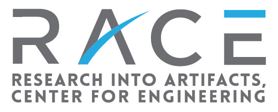価値創成部門
[:ja]
次世代モノづくりを実現する手段として、実体としてのモノとそれが供給するサービス、それを実現する社会システムが一体となり、価値創成を図る必要があります。それはいわゆる製品サービスシステムの概念にとどまらず、人や社会へのインセンティブ付与や社会制度の設計等までも組み入れ、ライフサイクルまで考慮した、広義のサービスシステム構成となります。本部門では、デジタルトリプレットという新しい概念を用いて上記の問題を扱います。これは、現実世界と情報世界を1対1に対応付けるサイバーフィジカルシステム、デジタルツインの考え方を拡張し、知的活動世界を繋げて三層構造にした考え方です。デジタルトリプレットでは、作り手の知的活動も含めた統合的なフレームワークで考えることができるため、価値創成過程を明示化できる点が本質的です。本部門では、作り手と使い手により一度モノ・サービスが社会に実装された後も、保守やアップグレード等の形で社会がシステムの面倒を見ることで、社会の中でシステムが成長、進化するエコシステムつくり(社会システムつくり)を目指します。これにより、サステイナビリティ社会の実現にも貢献します。
[:en]
In order to realize the next generation manufacturing, it is necessary to unify the physical products, the service to supply them and the social system to actualize these, and attempt value creation. This does not only mean the concept of the said product service system. Instead, it builds a service system in a wider sense that integrates incentive creation to people and society, designing of social system and the life cycle. In this department, we will approach these challenges by employing a new concept called digital triplets. This is a concept with a triple-layer structure that builds on the concept of digital twins, whichis a cyber-physical system that connects the real world and the digital world in a one-to-one relationship, by adding the world of intellectual activity. Digital triplets enable thinking with an integrated framework that includes the intellectual activities of the creator, and therefore its essence is the fact that it can clarify the value creation process. This department will strive toward the creation of an ecosystem (social system) that enables growth and evolution of the system within the society after the introduction of the product/service bythe maker and the user through the society looking after the system in the form of maintenance and upgrading. The department contributes to the realization of a sustainable society through creation of such an ecosystem.
[:]
認知機構部門
[:ja]
次世代モノづくりでは、社会の潜在的なニーズを的確に把握し、それに対応した提供価値を具体的に提示する能力が求められます。この際には、作り手が有する技術drivenではなく、使い手を起点とした、その価値を最大化することに適切な手段を研究、開発、利用することが重要です。「モノ・サービスの使い手、作り手、関係者、さらにはそれらが生み出すモノ・サービスすべて」を社会と考えると、その中で人が人工物をとらえるしくみ(認知機構)の解明が必須です。これには人の認知過程を扱う心理学の知見をも用いた、文理融合型の研究が必要です。人がモノ・サービスを扱う際の主な特性としては、ユーザビリティ(使いやすさ・使いにくさ)や嗜好(好き・嫌い)、態度(主体的・受動的)が考えられ、これらの関係が適正化されなければなりません。たとえば、スマートフォンと自動車は共に有益ですが、その不適切な利用が「ながら運転」という弊害を生じさせる危険性があります。本部門では、次世代モノづくりで創造されたモノ・サービスが、人や社会と適正に融和し受け入れられるために、人がモノをどう認知し、モノとどう相互作用するかを解明し、人、社会に資する人工物つくりに役立てる取り組みをおこなっています。
[:en]
For the next generation manufacturing, the ability to accurately understand the potential needs of the society and present the value offers that correspond with these needs is required. For such an ability, it is important to research, develop, and employ the method that is user-driven and maximizes their values instead of the method driven by the technology of the creator. If we understand the society as “the entirety of users, creators and everyone involved in the products and services, and all other products and services generated by these”, it is necessary to elucidate the mechanism of how people understand artifacts (cognitive mechanism). A research that integrates arts and science that includes psychology, which studies human cognitive process, is required for achieving this. The main characteristics of people using products/services include the usability (easy/difficult to use), taste (like/dislike), and attitude (active/passive), and hence, their relationship must be optimized. For instance, smartphones and cars are mutually beneficial. However, their inappropriate combination can cause the danger of “distracted driving”. At this department, we are conducting researches to elucidate how human recognizes artifacts and interacts with them in order for the products/services created through the new generation manufacturing to be optimally integrated into and accepted by the people and the society, and contribute to the production of artifacts beneficial to these.
[:]
実践知能部門
[:ja]
本部門では生産システム設計や技能抽出・教育システム設計等を遂行する、出口を指向したAI(実践知能)を用いた新しい社会実装技術の確立を目指しています。具体的には、昨今飛躍的な進歩を遂げている深層学習を中心とするAI認識技術に、工学系研究科が有するハードウェア技術やインフラ技術を高度にすりあわせることで、世界的に圧倒的な競争力を有するモノ・サービスシステム作りを目指しています。例えば、認識技術を用いた建設機械による作業の自
動化、医療画像からの自動診断、化学プラントの制御の自動化など、さまざまな活用可能が考えられます。方法論としては、対象とする問題において必要とする情報選択を起点として、そのために必要な実世界データ、データ取得に必要な高性能センサ等の物理デバイス、デジタルトリプレットデータの処理手法選択、ウェブ技術等を活用したサービス構築とその継続的改善、さらに人間のモノづくり活動の支援という、情報システムの循環設計を中心に据えた研究開発をおこなっています。ここで全体のフレームワークには過去の人工物工学研究で培われた知見を用い、実世界寄りのハードウェア開発要素には工学系研究科等のresourceを用いることで研究開発を進めています。このように両者が強固なタッグを組むことで、最先端AI技術を含む人工物の、社会実装技術が構成されます。
[:en]
This department strives for the development of new technology for socialimplementation using AI (Artificial Intelligence) directed at output, which conducts production system design, skill extraction, and education system design. Concretely, we are aiming the creation of products/service system that possesses overwhelming international competitiveness by skillfully combining the AI cognitive technology centered on deep learning, which is rapidly developing today, with the hardware and infrastructure technology the Graduate School of Engineering of the Faculty possesses. For instance, automation of the works by construction machines using the cognitive technology, automatic diagnosis basedon medical images or automation of chemical plant control can be considered as possible applications. The commencing point of our methodology is the information selection necessary for the solution of our target problems, and we are conducting research and development on elements that emphasize circulation development of information system, such as collection of real world data necessary for the information selection, physical devices including the high-performance sensor required for the data collection, processingmethod selection for digital triplets data, service construction that utilizes the web technology and its continuous improvement, and support for human manufacturing. At our department, the knowledge acquired through past artifacts engineering researches is used as the overall framework, and the research and development of real world hardware development elements is conducted through utilization of the resources of the research by the Graduate School of Engineering. Through such a strong collaboration between two disciplines, social implementation technology of the artifacts including the cutting edge AI technology is being built.
[:]











